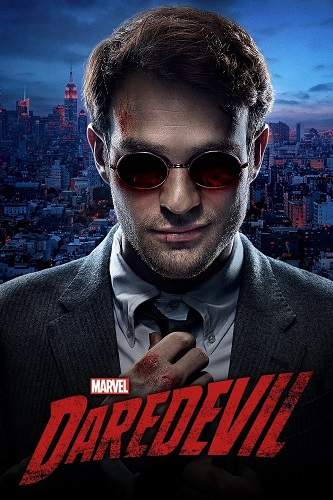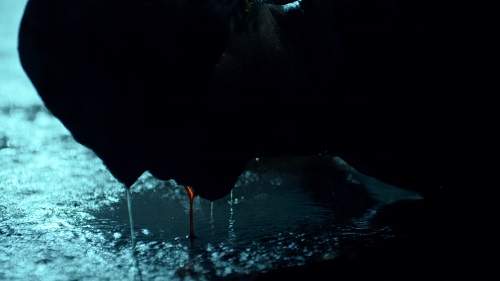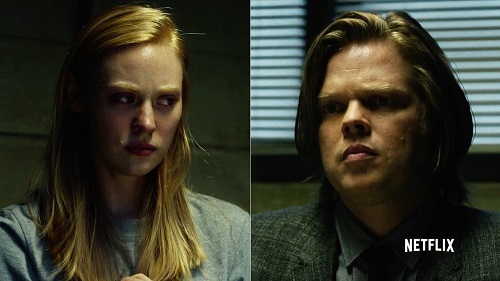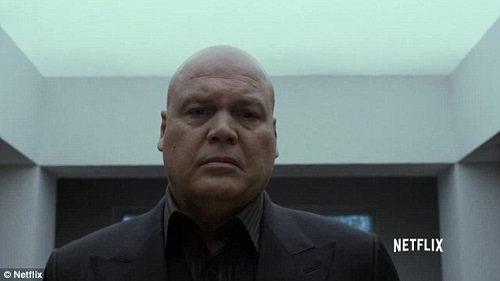10 Crucial Observations Made After Watching Netflix’s New Daredevil Series
 |
| Netflix/Marvel Studios |
This weekend I spent about thirteen hours streaming the new Daredevil series. Daredevil is the first of the Marvel/Netflix shows and seems to be a good portent for future efforts. I definitely enjoyed it, though I’m not sure I enjoyed it enough to stream it all in one weekend if I hadn’t been prompted with a deadline for this list. I’ve read a decent amount of Daredevil stories and generally like the character, though he’s certainly been through a few versions like all good comic characters.
Daredevil is a break with the Marvel Cinematic Universe as it has existed up until this point: grittier and darker than what we’ve seen before. It’s closer to a movie feel than the more episodic Agents of S.H.I.E.L.D., and I like it much more than Agents for that and other reasons. This show felt big, like an event. Compared even to my beloved Arrow and Flash, it seemed bigger and meatier, with a little more going on. This isn’t to say it was perfect; many of the reviews and commentaries on the show are extremely favorable, but it still definitely has its flaws as well. Be warned, spoilers follow.
1. It’s a Different Take on the Marvel Universe
The show opens with real estate agents talking about a disaster where half the city burned down. I got sidetracked into thinking 9/11 for a while, but figured out in the first episode they were referring to the Avengers movie. For all of those cool shots of the Avengers kicking ass and Captain America telling Hulk to smash, there were also a lot of destroyed buildings and carnage, a fact that was somewhat glossed over in the movie itself.
Daredevil remembers, though. It’s very clear that Hell’s Kitchen is trying to struggle back from economic disaster and worse. Frequent mentions are made that it was always a rough neighborhood, but it has since become worse than ever before. Little moments like Foggy Nelson (Elden Henson) and Matt Murdock (Charlie Cox) getting a cheaper office and frequent mentions of construction and zoning, while not necessarily totally superheroic, do ground things more in reality than one might expect. A few jokes are made about the Avengers along with the occasional call out, but cameos are lacking. There are Easter eggs, of course, but Daredevil never gets any visits from the Avengers or S.H.I.E.L.D.
2. It’s Gory and Violent
 |
| Netflix/Marvel Studios |
| There will be blood! |
I’ve seen much worse than this series. I feel like it was on the upper levels of PG-13, occasionally reaching an R rating here and there. There is a lot of blood, one decapitation, one surprisingly realistic severed arm, and a few other things like a man impaling his eye on an iron spike. A lot of the blood is Matt Murdock’s. (This is to say that he bleeds A LOT.) One of the early episodes, “Cut Man,” features him slowly bleeding out in a dumpster. More to the point, it starts with a slow establishing shot of his blood sliding down the side of a dumpster. It’s not something you would seen in an Iron Man movie, for sure.
Daredevil also has a lot of downtime between fights. Any “boss battle” tends to be followed up with an episode or so of Matt lounging around and being doted over by Rosario Dawson’s nurse (which, in fairness, gives a good reason to spend some downtime). This isn’t to say that these combats are per se realistic. Matt shrugs off a few lethal injuries, including being dragged across a room by a kusari-gama in his gut. He also tends to shrug off being at death’s door to beat up baddies as the plot demands, though you have to expect that from a superhero.
3. The Main Threat Is Gentrification
 |
| Eric Nyquist |
| A Starbucks!? Not on Daredevil’s watch! |
A somewhat simplified summary of Daredevil is that a very wealthy man – the Kingpin (Vincent D’Onofrio) – returns to his childhood neighborhood after a massive disaster to purchase as much land as possible and rebuild it. He is opposed by a rag-tag group of defense attorneys, reporters, and residents not wanting to lose their rent-controlled housing. In the end, the ragtag defenders are successful and manage to protect their beloved tenements and slums in order to keep chain restaurants and shopping malls away.
This is especially interesting given that the real Hell’s Kitchen is apparently gentrified in its own right. Still, this Kingpin has more in common with Walmart or Donald Trump than a run of the mill criminal. Clearly the intent is to be more topical than we might expect with our superhero adventures. It can be a little jarring at times but overall I thought it worked well, making things a little more immediate or relatable than they could be otherwise. Still, it did give a bit of cognitive dissonance at times as it really does seem like Wilson Fisk just wants to help and might be good for the city in the long term. More on that later.
4. The Timeline Can Be Confusing
This is something that was clearly intentional as many episodes begin in the middle of the larger story, some even starting with the ending. Clearly the creative team wants you to feel confused at times. However, there did seem to be some genuine issues. Daredevil features several parallel stories, and often it would seem like multiple hours, or even days, would pass by for one character while another was stuck in time. This is always a danger for parallel story lines. Even Empire Strikes Back has some confusion about how long Luke trains with Yoda (see above). It’s made a little worse here with the deliberate time slips.
There’s also an unfortunate tendency for things to happen off camera that we probably wanted to see. I already mentioned Daredevil ending up in a dumpster half bled to death, but I did not mention the fact that you never actually see the fight happen. It’s just implied between the last episode and this one, even though Daredevil is trying to solve a kidnapping we saw in the episode before. A worse incident happens when Daredevil ends up turning against his more fanatical mentor, Stick (Scott Glenn), in order to save a possessed child. When Stick fires a bow at the kid, Daredevil deflects Stick’s arrow, and then fights some mooks. In the next scene, Stick shows up at Matt’s apartment and casually mentions he killed the kid anyway.
Later, when Matt and Foggy have a day-long argument/discussion about Matt’s activities as Daredevil we only see snippets despite the fact that the fallout lasts multiple episodes afterward.
5. The Supporting Cast Is Awesome
The parallel stories in Daredevil are due to the fact that it is almost an ensemble cast by the end. Karen Page (Deborah Ann Woll) in particular is a great character, as fanatical about justice as Matt is (maybe more at times) and with a bloody trail to rival his. Foggy starts out as comic relief, but is a crucial team member by the end, too. Finally, although I honestly could have gone without the multiple trips to visit his wife in the hospital, I really liked Ben Ulrich (Vondie Curtis-Hall). His death was also a big shocker and something you felt instead of him just being a designated victim.
This did have its drawbacks at times. In contrast to a show like Flash where the supporting cast can be a little flat with all plotlines revolving around Barry’s schemes and adventures, here you have individuals going out on their own. It isn’t always ideal. They did steal the spotlight at times, and there were times where Daredevil himself got a bit lost in the shuffle. Mainly because he’s an enigmatic character to start with, as well as having a tendency to get injured very badly before spending multiple days stuck on a couch while others are out investigating.
6. The Angst Is Strong With This One
 |
| Netflix/Marvel Studios |
| So much internal conflict! |
The show makes no bones about the angst factor, tying it back to Matt’s Catholicism and the fact that he of all vigilantes has a law degree, so you would expect more respect for due process. It’s clear that the creative team is going for a very long origin story in this season. The suit doesn’t even appear until the second half of the last episode, for instance. I think this makes it excusable, but I do hope that they cut back some on the self doubt in the future, at least a little. Matt’s bouts of recuperation are usually followed by equally crippling bouts of self doubt, and it was a bit too much by the end.
It’s also a meat grinder for villains and supporting cast on a massive scale, killing both frequently. The ordinary people that help the arguably less-ordinary people supporting Daredevil die a lot. Even usually invulnerable characters like the kooky old lady and mentor figures bite the dust. Both these deaths and the heroes’ feelings about the death afterward (survivor guilt and literal guilt in a few cases) take a toll. It’s engaging and well done but it seemed perhaps a little early for some things. For example, when the still new Nelson and Murdock law firm almost shatters over secret identity angst halfway through the first season, I wasn’t sure I cared enough to be unhappy since we had barely seen the friendship long enough to care about it.
7. The Fight Scenes Are Well Executed
In fact, I might call them the best Marvel fight scenes so far. I’ve always found the big showdown fights in the Marvel movies to be a little disappointing as they tend to be either gigantic CGI fests like Iron Man, anticlimactic stuff like the first Thor, or just weird and off kilter like Thor: The Dark World. Even Captain America: The Winter Soldier, which had some awesome street level fights, turned into a bit of a Star Wars ripoff with multiple helicarriers and all of that noise. Daredevil, on the other hand, stays on message with some great martial arts.
Daredevil doesn’t necessarily walk over mooks, especially in the beginning. He also has a very reactive fighting style at first, requiring enemies to come to him and get thrown around. This probably makes sense, given his impairments and powers, and it is a nice touch. Daredevil also tends to lose his temper and do some Daredevil-dad inspired fisticuffs, which is also a nice touch. They fare almost as well as the fancy spin kicks and whatnot, though the somersault slam is the big finisher in at least two fights. In a world where fights are often, strangely, the last thing on superhero director’s minds (see the somewhat embarrassing Bane vs Batman showdown in The Dark Knight Rises) I really appreciated this.
8. The Pacing Is Slow
On the other hand, those cool fights can be a little few and far between. For every alleyway battle, there were an equal number of employee bonding nights at Josie’s or lectures from Ben Ulrich about journalistic ethics. Daredevil as a hero often seems very unfocused, lacking in any sort of master plan, sometimes just punching out random criminals if he does anything at all. Flashbacks are also common. I didn’t hate these as I have grown to hate them on Arrow, but they never delight me. Given that this show gives flashbacks to Matt, Foggy, Fisk, and even at one point a random hitman, I thought they got to be too much.
The law firm aspect of the series also fell by the wayside at some point. As near as I can tell, Nelson and Murdock only ever had a single case, maybe three if you give them credit for the two that never got to trial. It never really seems to inconvenience anyone, even though neither Foggy nor Matt seem to be particularly rich. I’m not sure what they do with their days. I guess maybe full-time investigation of criminals, but that seems a bit unlikely to be a full time job on its own, let alone the question of income.
9. Wilson Fisk Is No Kingpin
 |
| Netflix/Marvel Studios |
| Kingpin ponders his inner child. Literally. That happened. |
Well, he is, sort of. I mean, he is in charge of organized crime, big, bald, a nasty hand to hand fighter, and insanely rich. However, the show takes a very odd tactic with him, first not introducing him for a long time, then starting out very slowly with his extremely awkward courting of future wife Vanessa. We then learn that he’s still a sad obese kid inside, with a fairly ham-handed moment where he literally sees his inner child in a mirror. After that he seems to be a fairly ineffectual leader with a bit of a speech impediment, whose subordinates all constantly complain about him.
The best I can do is assume all this is an origin story for Kingpin as well, which is respectable. It’s hard to call it an origin, however, when he starts out on top and then falls within the first season. He also lacks some of the features of the classic character, not really being as big as in the comics plus never having his cane or white suit. This is all fair enough, but one thing that really bothered me was his habit of falling into baby talk when lashing out, saying things like “YOU EMBARRASSED ME” or “YOU BOTHERED MY MOTHER” while beating people to death like the world’s most violent toddler. I guess it was supposed to be frightening, but I thought it was just odd. Kingpin’s job is to be smart, not turn into Hulk Junior, let alone be a sad man with a chubby inner child literally looking at him from the mirror.
10. Watch It for Yourself
The Daredevil series is a bit of a mixed bag. A lot of very daring choices were made. Non-chronological episodes, efforts to make the Kingpin look like a good guy in its own right, and a powered-up storyline for Karen Page all come to mind. They also minimized the weirder parts of the Daredevil canon with a lack of Elektra, Bullseye, and only two episodes with ninjas. Adults-only elements such as massive amounts of blood and frequent swear words are in there, too. I’m not as in love with it as a lot of people seem to be, but I did really enjoy it.
If Daredevil is demonstrative of the future of Netflix’s partnership with Marvel, then I feel good about it. I would like a few less flashbacks, villains that are actually bad, and more onscreen heroics. Nonetheless, the production values and quality were definitely a cut above what they could have been. I also liked that the show was able to go darker and grittier than any Marvel project so far. I do hope that next season will be more on-topic, with less navel gazing, and that we can actually see Matt do some more lawyering. It’s not a perfect show, but I would recommend it.
Previously by David N. Scott
10 Signs Arrow’s Writers Think He’s Batman
10 Reasons I’m Glad I Attended Comikaze
A Christian Gamer Offers 5 Reasons to Watch Dark Dungeons (And 4 Not to)
10 Reasons David Goyer Must Be Stopped
10 Things I Learned Running Game Demos at WonderCon
